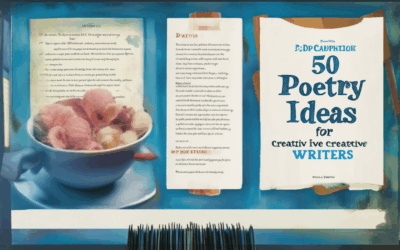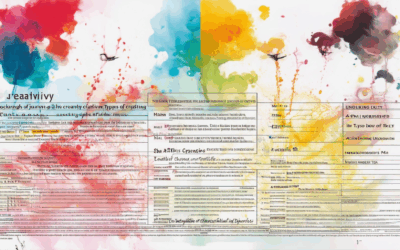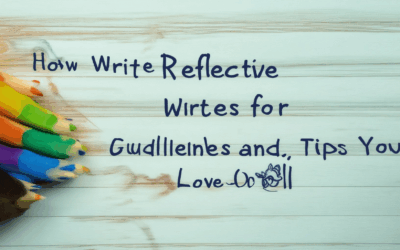Writing poetry can be a deeply rewarding experience, but finding the right inspiration to ignite your creative spark can feel like an uphill battle. Whether you’re a seasoned poet or just beginning, discovering the perfect source of poetry inspiration is key to unlocking your potential. In this comprehensive guide, we’ll explore proven methods and expert tips to help you overcome creative blocks, discover your unique voice, and craft poems that resonate long after they’re written. From harnessing the power of everyday moments to mastering the art of emotional depth, this article will walk you through the essential steps to fuel your poetry journey. Let’s dive in and unlock the secrets to finding endless poetry inspiration, no matter where you are in your writing process.
Key Takeaways
- Choose a theme or subject to guide your poetic direction and inspiration.
- Experiment with different poem structures to unlock new creative potential.
- Infuse your poetry with vivid imagery and rich metaphors to captivate readers.
- Draft freely and revise thoughtfully to refine your poetic vision.
- Read your work aloud and share it with others to refine rhythm and tone.
- Brainstorm ideas and explore diverse themes to spark creativity.
- Maintain consistency and flow to ensure your poem’s emotional resonance.
- Evaluate your poetry for clarity, emotional depth, and originality.
- Master rhythm and rhyme to add musicality to your verses.
- Seek originality and avoid overused phrases to stand out in poetry.
- Define a clear purpose for your poem to communicate effectively.
- Gather constructive feedback to grow and refine your craft.

How to Find Inspiration for Poetry
Inspiration for poetry can come from various sources and experiences. Here are some effective ways to discover your creative spark:
Become a Regular Reader
- Read diverse genres of poetry, including contemporary, classical, and experimental works.
- Follow poets and literary platforms like Silken Drum to explore reflective and imaginative content.
- Engage with different cultures and traditions through their poetic expressions.
Explore Nature and the World Around You
- Visit natural places like forests, mountains, and oceans to observe patterns and emotions.
- Pay attention to the seasons, weather, and the changing world around you.
- Document your observations in journals or simply note down phrases that catch your interest.
Experiment with New Forms and Structures
- Try writing in unconventional formats like haiku, free verse, or concrete poetry.
- Investigate the use of imagery, metaphor, and symbolism to convey deeper meanings.
- Explore the potential of sound and rhythm in your compositions.
Engage with Literary Communities
- Join writing groups or poetry societies to share your work and gain feedback.
- Participate in poetry readings and workshops hosted by platforms like Silken Drum .
- Learn from established poets and engage in collaborative projects.
Set Specific Goals for Your Writing
- Define a theme or subject matter you wish to explore in your poetry.
- Challenge yourself to write a certain number of poems or experiments per week.
- Establish a routine that supports consistent creative practice.
Reflect on Personal Experiences and Emotions
- Consider significant life events, memories, or emotions that you want to express.
- Use personal anecdotes to create relatable and authentic poetry.
- Think about how your unique perspective can offer a fresh viewpoint on familiar topics.
Seek Inspiration from Music and Art
- Listen to music that evokes strong emotional responses and analyze its components.
- Study paintings, sculptures, and other visual art forms to find symbolic inspiration.
- Allow the interplay of different artistic mediums to spark creative ideas.
Visit Museums and Cultural Exhibitions
- Explore exhibitions that feature works inspired by nature, history, and human emotion.
- Interact with historical artifacts and cultural objects to stimulate your imagination.
- Gain insight into different storytelling traditions and narrative structures.
Embrace Failure and Iteration
- Understand that creativity often thrives in imperfection and unexpected outcomes.
- View your early attempts as learning opportunities rather than final products.
- Refine your ideas and approaches through experimentation and exploration.
By exploring these avenues, you can unlock new perspectives and develop a unique style in your poetry. Remember, the journey of inspiration is as important as the destination itself.
What Makes a Poem Inspirational?
An inspirational poem transcends mere words on a page, resonating deeply with readers on an emotional and intellectual level. Here are the key elements that make a poem inspirational:
- Themes of Hope and Resilience : Inspirational poems often explore themes of overcoming adversity, finding strength in difficult times, or discovering personal potential. These themes inspire readers to view challenges differently and to believe in their ability to succeed.
- Imagery and Symbolism : Powerful imagery and symbolism allow readers to connect with abstract concepts or emotions. By painting vivid pictures, a poem can evoke strong feelings and spark introspection, which is essential for inspiration.
- Rhythm and Flow : The musicality of a poem, characterized by its rhythm and meter, enhances its inspirational impact. A poem that flows smoothly can feel more uplifting and motivating, helping readers find a sense of harmony in the words.
- Emotional Depth : Inspirational poems delve into the human condition, exploring universal emotions such as love, loss, joy, and sorrow. This emotional depth allows readers to identify with the experiences described and draw comfort or motivation from them.
- Connection with the Reader : An inspirational poem succeeds when it strikes a chord with the reader, resonating with their personal experiences or aspirations. This connection creates a bridge between the poet’s vision and the audience’s reality.
- Language and Tone : The choice of language and tone plays a crucial role. Words that are evocative, empowering, or thought-provoking can elevate a poem’s inspirational qualities. A compassionate or hopeful tone can uplift readers, while a passionate or rebellious tone can inspire action.
By combining these elements, an inspirational poem becomes more than just a collection of words—it becomes a catalyst for change, empowerment, and self-discovery.

Where Do Poets Get Their Inspiration?
Poets draw inspiration from a vast array of sources, each contributing uniquely to their creative process. Here are some common avenues that inspire poets:
- Nature and Scenery : Many poets find solace in the beauty of the natural world. Whether it’s the sway of trees, the sound of flowing water, or the vibrant colors of a sunset, nature often serves as a muse.
- Personal Experiences : Life events, both big and small, frequently spark poetic ideas. These could be moments of joy, heartbreak, or simple observations that resonate deeply.
- Emotions and Thoughts : Poets often channel their internal feelings. This could be anger, love, wonder, or doubt, transforming these emotions into meaningful verses.
- History and Culture : Drawing from historical events, myths, or cultural narratives can provide rich material for poetic exploration and reflection.
- Other Artists : Musicians, painters, and other creatives can inspire poets through their unique perspectives and expressions of art.
Additionally, reading great works of poetry and literature can fuel a poet’s imagination. Exploring diverse styles and themes allows for fresh perspectives and innovative ideas. Remember, inspiration is a dynamic force that can emerge from anywhere, anytime, and anywhere.

What Are the 7 Steps to Writing a Poem?
Here’s a step-by-step guide to crafting a compelling poem:
- Choose a Theme or Subject
Begin by selecting a theme or subject that resonates with you. Whether it’s love, nature, or personal reflection, having a clear focus helps shape your poem’s direction. - Determine Your Tone and Style
Decide whether your poem will be lighthearted, introspective, or profound. Consider the rhythm and meter that suits your vision, whether it’s free verse or a traditional form like a sonnet. - Select Imagery and Metaphors
Use vivid imagery and metaphors to bring your ideas to life. Paint a picture with words that evoke emotions or spark curiosity, making your poem memorable. - Draft the First Version
Write a rough draft without worrying about perfection. Let your thoughts flow naturally, capturing ideas as they come. Edit and refine later. - Revise and Refine
Read through your draft carefully. Make adjustments to clarify your message, enhance imagery, and tighten the language. Seek feedback from others to gain new perspectives. - Experiment with Structure
Explore different poem structures or forms. Try haiku, abcb rhyme schemes, or free verse to see what feels natural. Experimentation can lead to surprising breakthroughs. - Read Aloud and Share
Once your poem is complete, read it aloud to check rhythm and flow. Share it with trusted friends or family for feedback, and be open to constructive criticism.
By following these steps, you can create a poem that resonates deeply with readers and stands out in the literary world.
How to Start a Poem for Beginners
Starting a poem can feel daunting, but with a few simple tips, anyone can begin their journey into the world of poetry. Here’s a step-by-step guide to help you get started:
- Choose a Theme or Idea : Decide what you want your poem to explore. Themes like nature, love, or personal experiences can provide direction and inspiration.
- Brainstorm Words and Phrases : Write down words or phrases that come to mind. Freewriting or listing random thoughts can spark creativity.
- Experiment with Structure : Poems don’t always need rigid structures. Start with a simple form like a quatrain or a haiku to ease into rhythm and rhyme.
- Use Imagery and Metaphor : Paint pictures with words. Descriptive language and sensory details will bring your poem to life.
- Draft Your Lines : Sit down and write. Don’t worry about perfection—just let the words flow. You can revise later.
- Edit and Refine : Read your poem aloud and make adjustments. Remove unnecessary words and tighten your language for a smoother read.
- Share Your Work : Once you’re ready, share your poem with friends, family, or online communities. Feedback can be invaluable for growth.
Remember, poetry is a personal journey. There are no rules, and every poem is a unique expression of your voice. Keep writing, keep exploring, and enjoy the process!

How to Tell If Poetry Is Good
To evaluate the quality of your poetry, consider the following key criteria:
- Clarity and Imagery: A good poem often has clear imagery and well-defined themes. Make sure your words paint vivid pictures and that your ideas are easy to understand.
- Emotional Impact: Poetry should evoke emotions. Read your work aloud and see if it connects with you emotionally.
- Technical Skill: Pay attention to rhythm, meter, and rhyme. These elements contribute to the musicality of your poem and can enhance its appeal.
- Originality: Avoid clichés and overused phrases. Strive to bring fresh perspectives and unique voices to your work.
- Consistency: Ensure your poem flows well and maintains a consistent theme or message throughout.
- Purpose and Message: Consider the purpose of your poem. Does it effectively communicate its intended message or emotion?
- Feedback: Share your poetry with trusted friends or fellow writers who can offer constructive criticism and alternative viewpoints.
By focusing on these aspects, you can better assess the quality and impact of your poetry.




0 Comments